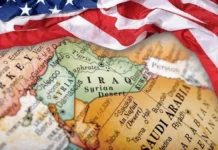Good Morning ,
Transatlantic Turbulence: Trump-EU Turnberry Agreement Reshapes Global Trade Balance
The United States and European Union have entered a historic — and highly controversial — trade pact that risks redefining global economic alignments. The Turnberry Agreement, signed on July 28, imposes sweeping tariffs on European exports while locking in a massive $750 billion fossil fuel purchase commitment from the EU. Beneath the diplomatic optics, the deal signals a deep strategic realignment with potentially lasting consequences for global trade, energy security, and industrial policy.
Key Sectors Targeted by New U.S. Tariffs
The agreement, driven by President Donald Trump’s renewed protectionist agenda, slaps a 15% tariff on a broad range of high-value European exports to the United States. This follows an earlier 27.5% hike on select categories in April, disproportionately impacting European economies such as Germany and France.
Strategic sectors affected include:
- Automobiles – German automakers face steep tariff headwinds.
- Luxury goods – French brands like LVMH and Kering are considering U.S.-based production pivots to mitigate exposure.
- Pharmaceuticals – Tariff exemptions for medicines are ending, threatening a sector that accounts for 22.5% of EU exports.
- Cosmetics and wines – These industries face new uncertainty, with over €8 billion in annual trade now exposed to higher costs.
Europe’s $750 Billion Energy Commitment: Strategic Dependence or Economic Leverage?
In exchange, the EU has committed to purchasing $750 billion in U.S. fossil fuels, particularly shale gas — a move that critics say deepens Europe’s strategic energy dependence and contradicts stated climate neutrality goals.
The European Commission’s ability to enforce this commitment remains questionable, especially amid diverging member state priorities. Nevertheless, the symbolic and financial weight of the deal indicates a forced alignment with U.S. geopolitical and economic interests.
Industrial Reorientation, Climate Contradictions, and Strategic Fallout
The agreement is expected to trigger major industrial reorientations across the EU, with companies considering relocation to the U.S. to maintain market access. This not only undermines Europe’s industrial sovereignty but also threatens its climate commitments, as increased fossil fuel imports conflict with the European Green Deal.
A Global Economy Rebalanced on Unequal Terms
The Turnberry Agreement underscores a new era of asymmetric trade negotiations, where traditional Western alliances are subordinated to America First–driven policies. Europe’s attempt to avoid confrontation with the U.S. may instead result in economic subjugation, as critics argue the deal surrenders too much leverage without meaningful reciprocity.
As tariff walls rise and energy dependencies deepen, the global trade system appears increasingly fractured — reinforcing the move toward a multipolar economic order where geopolitics, energy, and trade policy are no longer separable.
@ Newshounds News™
Source: Cointribune
~~~~~~~~~
BRICS Accelerates Intra-Bloc Trade: India and Brazil Set $60B Target Amid U.S. Backlash
BRICS member states India and Brazil have jointly committed to tripling their bilateral trade flows, signaling a bold escalation of intra-BRICS economic cooperation amid rising geopolitical tensions. The move comes as U.S. President Donald Trump continues to threaten tariffs against BRICS-aligned nations that pursue “anti-American” economic strategies.
Strategic Trade Expansion Between India and Brazil
India’s Prime Minister Narendra Modi and Brazil’s President Luiz Inácio Lula da Silva signed a series of agreements this month aimed at boosting food security, energy transition, and industrial collaboration. The deals cover a broad range of sectors including cotton, chicken, and essential food commodities, as both countries seek to reduce reliance on external powers and foster deeper South-South cooperation.
Lula stated unequivocally:
“Our $12 billion trade flow is not up to par with our economies. We are determined to accelerate this goal, tripling this amount in the short term.”
India’s Modi echoed this, asserting that a $60 billion trade target within five years is “not difficult to achieve,” given the growth potential and mutual economic alignment between the two emerging markets.
A Response to U.S. Pressure on BRICS Nations
The timing of the India-Brazil trade acceleration is significant. It follows recent threats from the Trump administration, which has warned of retaliatory tariffs on BRICS countries that pursue policies counter to U.S. interests. Trump’s comments have drawn rebukes from multiple BRICS leaders, including Lula, who criticized the U.S. president’s approach:
“I don’t think it’s very responsible and serious for a president of a country the size of the U.S. to threaten the world over the internet… We don’t want an emperor.”
This political backdrop underscores how BRICS trade initiatives are increasingly intertwined with broader multipolar realignment efforts, as member states seek autonomy from Western financial and trade systems.
Toward a $60 Billion Trade Corridor
Negotiations for the expanded trade framework are expected to begin in Q1 2026, with both nations committing to fast-track the process. Analysts view this as part of a wider BRICS strategy to establish strong internal trade corridors, increase resilience against sanctions, and enhance strategic food and energy security within the bloc.
As U.S. pressure mounts, BRICS’ internal partnerships — such as the India-Brazil trade pact — are becoming the foundation of a multipolar economic architecture, designed to shift global power away from the traditional transatlantic axis.
@ Newshounds News™
Source: Watcher Guru
~~~~~~~~~
Seeds of Wisdom Team RV Currency Facts Youtube and Rumble
Newshound’s News Telegram Room Link
Follow the Roadmap
Follow the Timeline
Seeds of Wisdom Team™ Website





